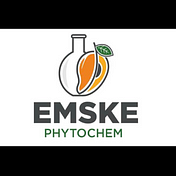Pinned

EMSKE Phytochem
Coming from a multidisciplinary technical background in Silicon Valley, SE Asia, & East Africa, the author builds awareness of plant medicines. Tw: @EMSKEPhyto

Coming from a multidisciplinary technical background in Silicon Valley, SE Asia, & East Africa, the author builds awareness of plant medicines. Tw: @EMSKEPhyto